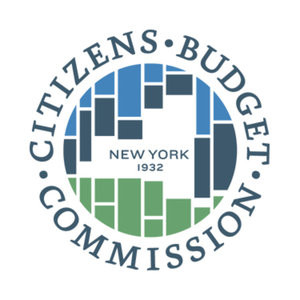
The CBC studies state and local issues and offers policy recommendations. Image Credit: Citizens Budget Commission
CBC report compares New York City’s lack of housing affordability to 22 other cities. On August 6, 2014, the Citizens Budget Commission released a report studying the scale of New York City’s affordable housing problem by comparing New York City to twenty-two other U.S. cities that were either among the largest U.S. cities by population, or the centers of the largest metropolitan areas by population. The study covers a thirteen-year time period, 2000 to 2012. CBC found that while New York City’s housing market relied more on rental housing than any other city in the study, and that even though the housing supply grew more slowly than the other cities, New York City still did not have the highest average rents, nor was it the most unaffordable.
CBC found that in 2012, 68.3 percent of all the occupied housing units in New York City were rented. That percentage placed New York City at the top of the list, with Miami, Boston, San Francisco and Los Angeles rounding out the top five. CBC drew a connection between rental shares in a city’s housing market and the importance of affordability, stating that affordability is a greater issue for renters than owners because renters “…typically have lower income, likely making housing costs more burdensome.” The greater the share of a city’s housing market that is taken up by rentals, the greater the importance placed on affordability.
The report also evaluated data on the change in total housing units from 2000 to 2012. During that time period, New York City’s supply of housing units increased by 5.8 percent. Only Chicago, Philadelphia and Detroit were slower. Each of those cities experienced a population decline during the time period rather than an increase as New York City did. CBC also found that New York City’s vacancy rate in 2012 was 3.6 percent, below the 5 percent emergency limit New York City uses to justify rent regulation.
CBC collected data on the median rent of the selected cities during the years 2000 and 2012. In 2012, New York City ranked sixth-highest in median rent, behind San Francisco, San Jose, San Diego, Washington, D.C. and Boston. This is a slightly negative trend, as New York City ranked seventh in 2000. CBC also looked at the percentage of rental units that were rented for a monthly rent of less than $1,000. In that analysis, New York City was the fourth-worst with just 37 percent. Only San Diego, San Francisco and San Jose had a lower percentage.
Finally, CBC evaluated the cities’ housing affordability based on the U.S. Department of Housing and Urban Development’s standard. HUD measures housing affordability at 30 percent of household income, with anything under 30 percent considered “affordable”. Applying that metric to housing data from 2012, CBC found 51 percent of New York City’s renters spending over 30 percent of their income on their homes. This is an increase from the year 2000, when 41 percent of New York City’s renters were paying over the 30 percent mark. In 2000, New York only ranked eighth-worst among the field; in 2012 it ranked ninth. CBC found that in all of the studied cities between 2000 and 2012, each one experienced an increase in the share of rental households with unaffordable housing.
CBC concluded that while New York City is unique among cities in the size of its rental market in relation to its total housing market, and its slow growth of new housing stock, both the rent costs and the accompanying burdens are higher in other major cities. After placing New York City’s problem in the national perspective, CBC’s report suggested adopting policies to increase development and housing supply as a solution.
Citizens Budget Commission: “The Affordable Housing Crisis: How Bad Is It in New York City?” (August 2014).
By: Michael Twomey (Michael is a CityLaw Fellow and a Graduate of New York Law School, Class of 2014).

